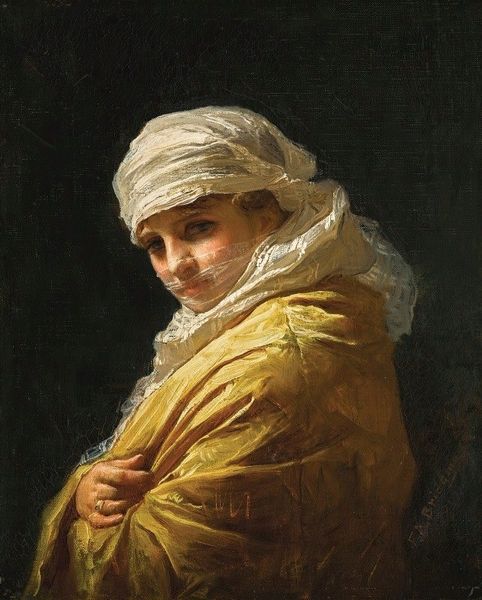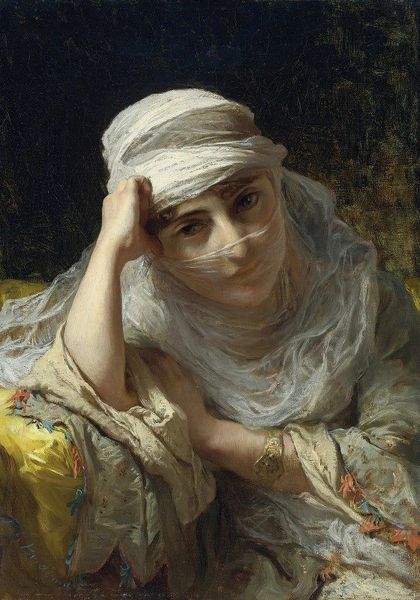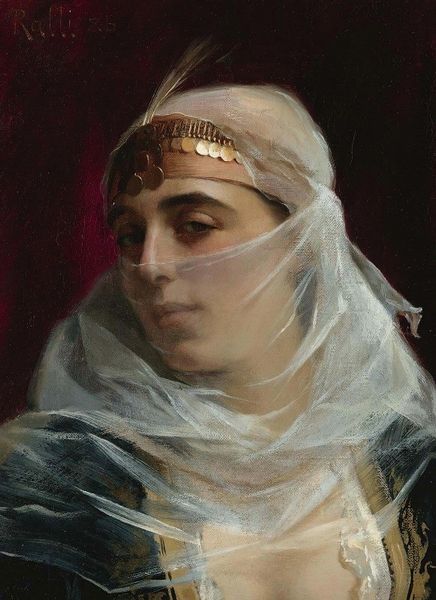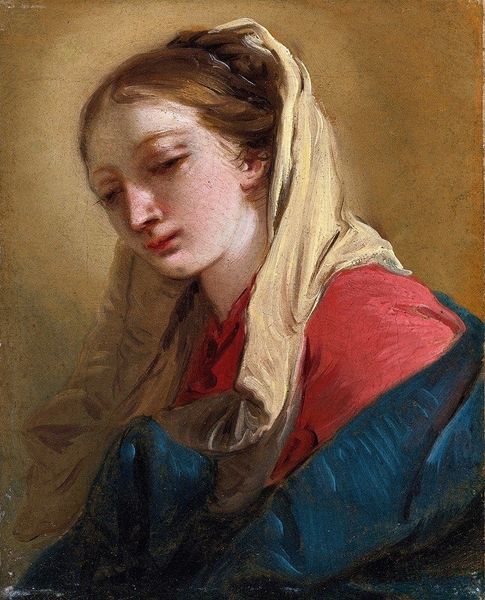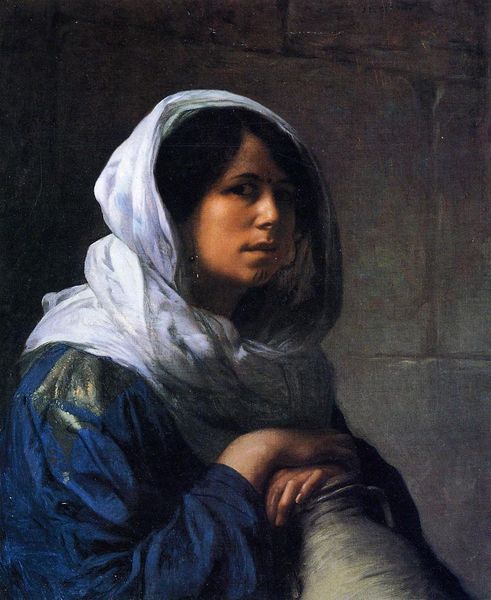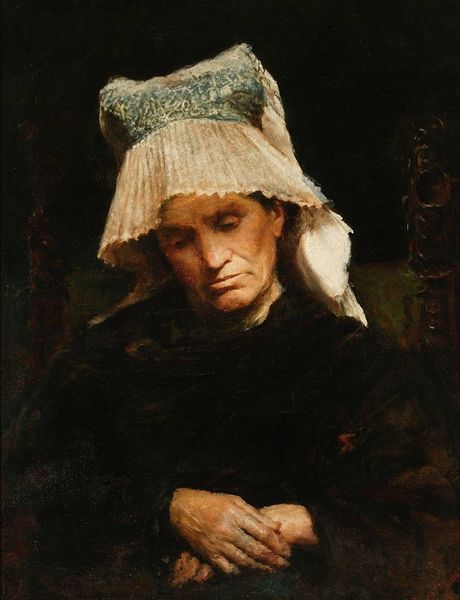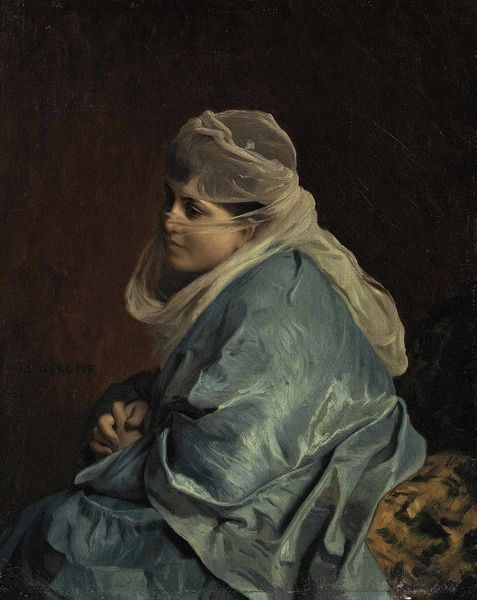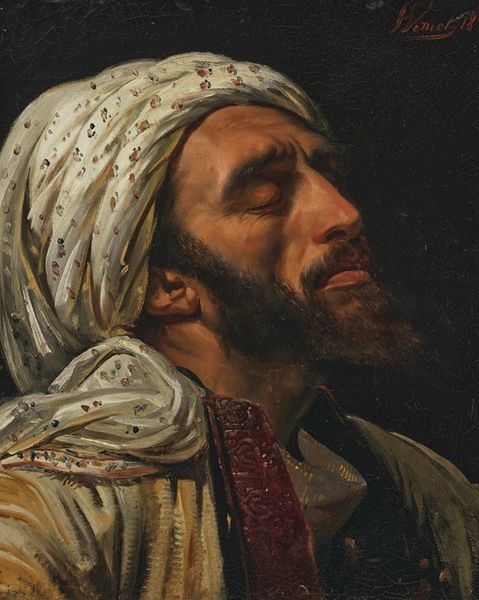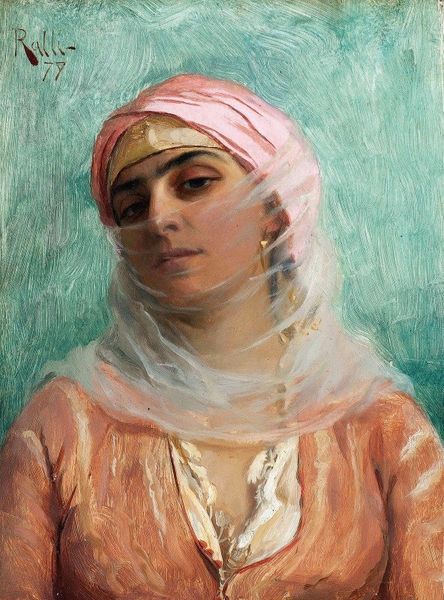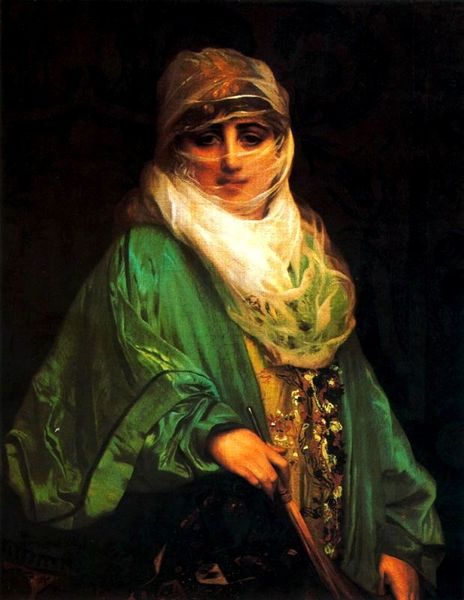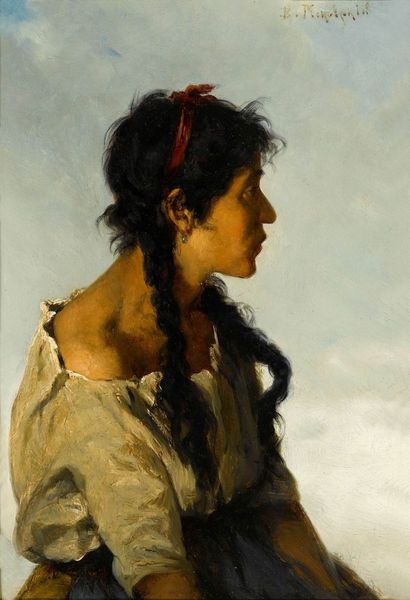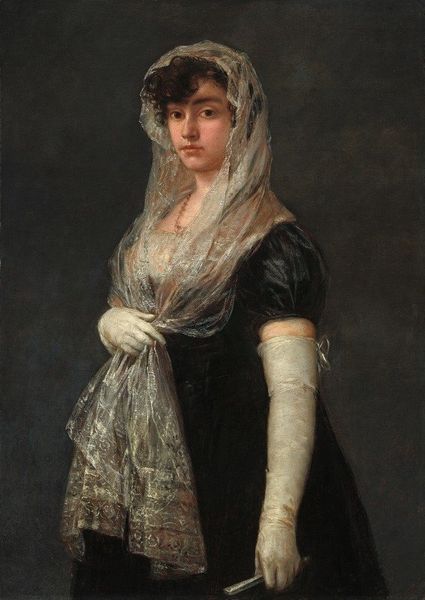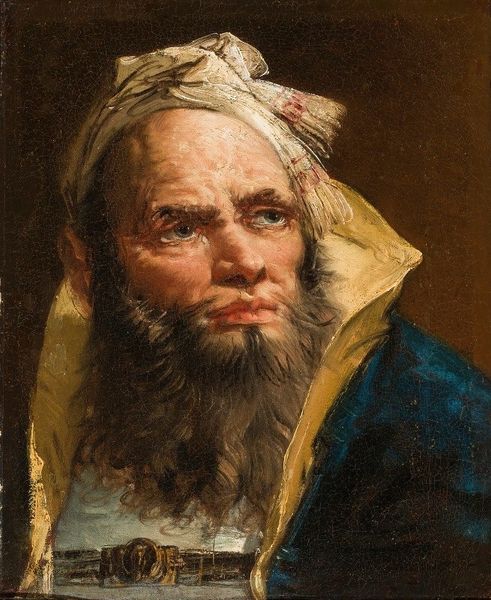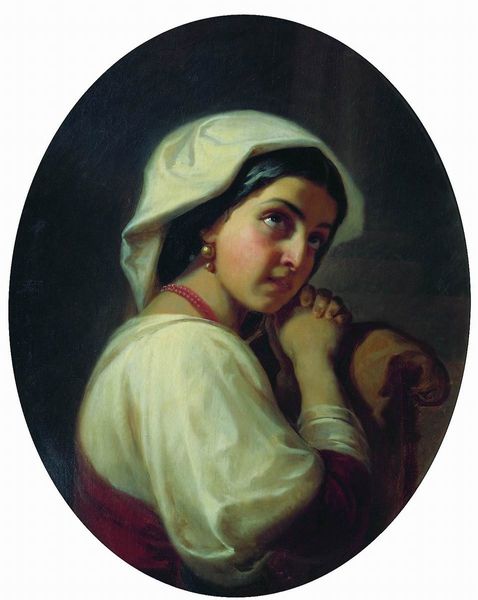
painting, oil-paint
portrait
figurative
painting
oil-paint
oil painting
orientalism
academic-art
realism
Copyright: Public Domain: Artvee
Editor: This is Frederick Arthur Bridgman’s "The Glance," painted in 1881 using oil paints. I’m immediately struck by the texture – especially the way the light catches on the folds of her bright yellow clothing. How would you describe this piece? Curator: Considering the historical context, Bridgman was a painter deeply invested in Orientalism, a 19th-century Western art movement fascinated with the “East.” To me, the most interesting element here is the garment production, namely, where these fabrics were sourced, the conditions of the workers creating these textiles, and then its subsequent consumption by Western audiences eager to engage in exoticized fantasy. It seems that material realities underpin even a simple portrait. Editor: That’s fascinating. So, you're saying the beautiful clothes actually tell a larger, and perhaps darker, story? The artist is so focused on realistic portraiture; I almost miss the significance of her clothing. Curator: Exactly. It’s about questioning the entire system of production and representation. The materials speak volumes, hinting at global trade networks, colonial power dynamics, and Western consumption patterns. The very "realism" you point to is itself a construct of those processes. Look at the details. The rendering of these fine materials relies upon potentially exploitative labor practices overseas. We must question how the image conceals those processes of artistic, social and economic exchange and value creation. Editor: Wow, I hadn't thought about it that way. Looking again, the fabric’s shine does seem…loaded, now. Are you saying that we need to question what materials are included in art, and how it all gets made? Curator: Precisely! By looking closely at the materiality of this image, and how the painting reproduces material itself, we can decode power structures embedded in seemingly straightforward portraits like "The Glance.” It highlights the labor, commerce, and social relations which gave the garment, and therefore the image, material being. Editor: That makes me rethink everything I thought I knew about this painting! I really appreciate your shedding light on how an artwork’s production affects the understanding of a painting. Curator: Likewise. Thinking about how it comes to be matters more than we thought.
Comments
No comments
Be the first to comment and join the conversation on the ultimate creative platform.
